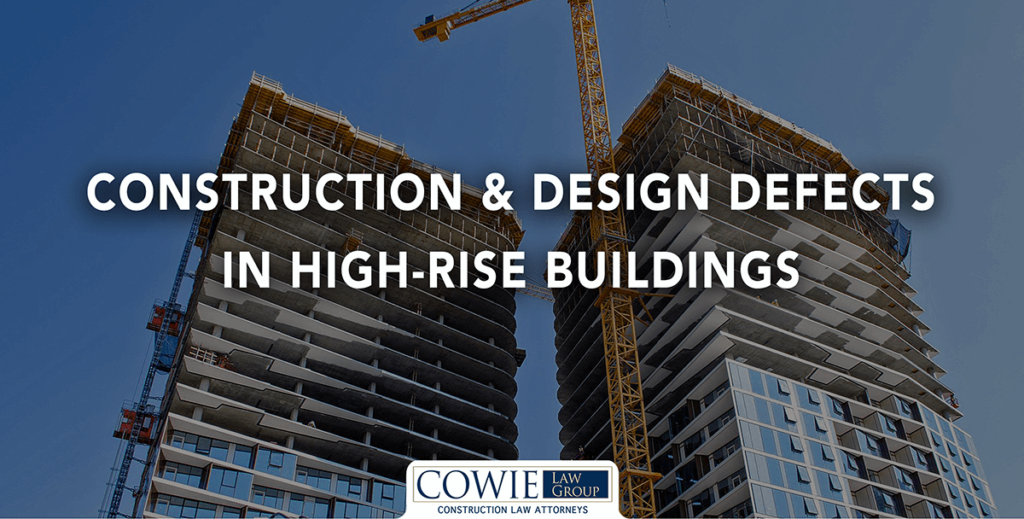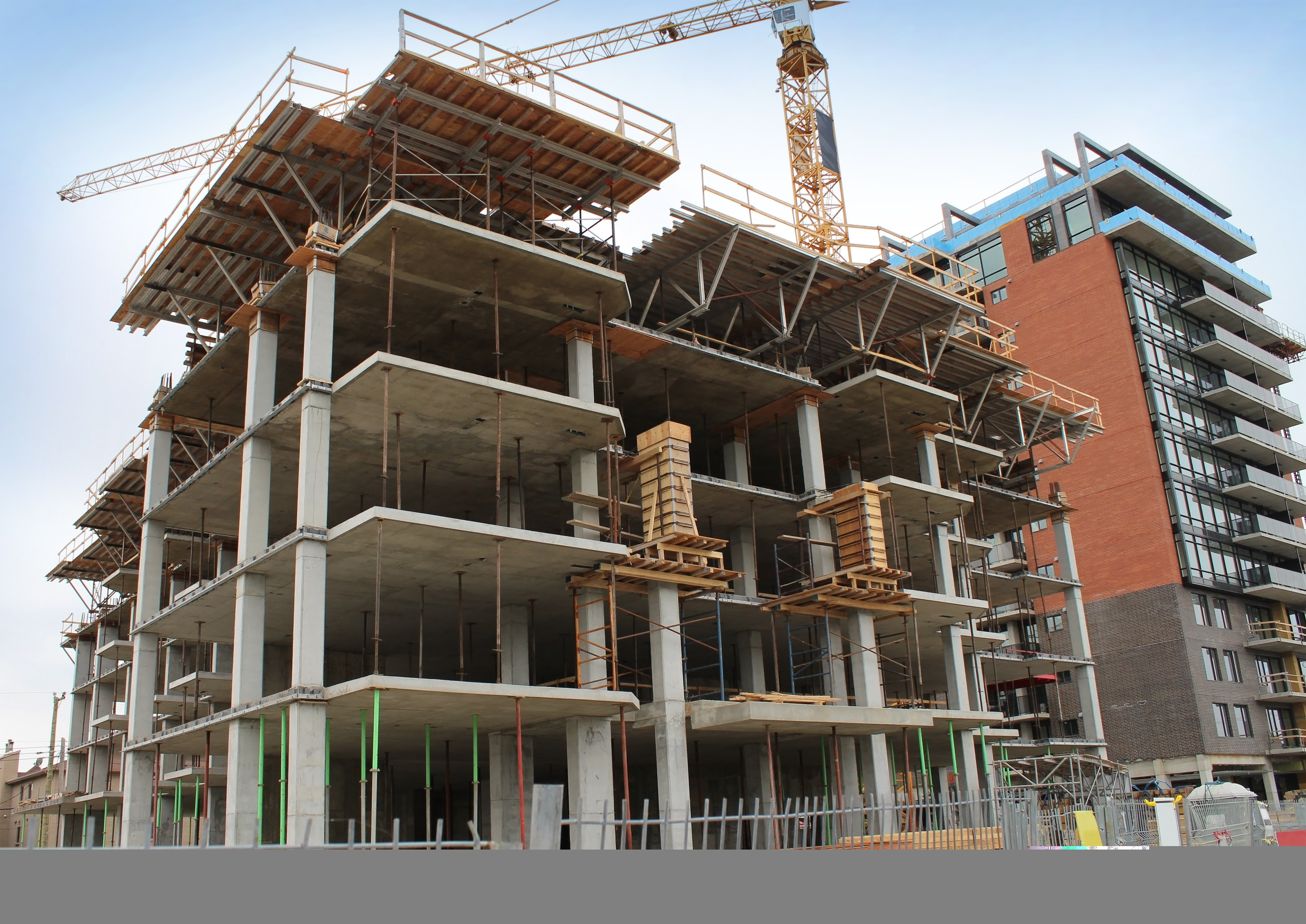CONSTRUCTION AND DESIGN DEFECTS IN HIGH-RISE BUILDINGS, A MARYLAND CONSTRUCTION LAWYER’S PERSPECTIVE
By Maryland Construction Law Attorney
Nicholas D. Cowie
The increased migration from suburbs to metropolitan areas has accompanied an increase in high-rise construction. The resulting metamorphosis of urban skylines, such as seen from Maryland’s Baltimore harbor, has also brought with it many complex construction law and construction litigation issues. Our law firm’s Maryland construction law practice is increasingly called upon to resolve construction and design legal defect disputes between owners, contractors, builders, and design professionals arising out of the construction of high-rise buildings.
A high-rise building is considered to be approximately seven stories or more above grade according to the National Fire Protection Association Life Safety Code, which defines a high-rise as being 75 feet (23 meters) measured from the lowest level accessible to fire department vehicles up to the floor level of the highest occupiable story. High-rise buildings may be residential (e.g., condominiums or multifamily apartment buildings), commercial (e.g., commercial office or retail space), or mixed-use structures. High-rise buildings are typically unique, custom buildings designed and built for a particular owner at a particular location. The construction of a high-rise building, unlike a manufactured product, is not a standardized process repeated and perfected over time on an assembly line. The design and construction of a high-rise building requires careful oversight, supervision, and coordination among design professionals, contractors, and subcontractors at each critical aspect of building construction to avoid building construction and design defects.
The initial development and design phases of high-rise buildings can be substantially more complex than for low-rise or mid-rise building developments. This is, in part, attributable to the need for the project architect to seek greater assistance of other specialized design professionals, such as geotechnical and structural engineers, to ensure that the aesthetic design desired by the owner will function in the field according to sound engineering principles. With building structures having architectural features extending multiple stories into the sky, involvement of professional engineers and other design specialists is essential to prevent the construction of buildings that are subject to structural failure and other construction or design deficiencies. Even the best laid plans for the construction of elaborately designed high-rise buildings can go awry when implementation of complex architectural drawings are not properly supervised and monitored.
Construction lawyers and construction defect attorneys are often tasked with sorting out liability for when both high-rise construction defects and design deficiencies are implicated in high-rise building construction failures that cause property damage or require building owners to undertake costly and unexpected repairs. Construction law attorneys working with expert construction consultants may be confronted with a combination of potential sources of liability for construction failures in high-rise buildings, including deviations from acceptable construction industry standards, faulty workmanship and materials, improper design, lack of construction supervision, and failure to comply with approved design drawings.
During the design phase of a high-rise development, structural and architectural aspects of the building plans and specifications may undergo several design revisions by a variety of different design specialists, including mechanical, geotechnical and structural engineers. The outcome may be several layers of revisions culminating in some complex design features that provide both aesthetics for the owner and structural stability and functionality for the engineers, but which are difficult or even impractical for a contractor to implement or achieve in the field. This can result in contractors and subcontractors taking construction shortcuts (deviations from design drawings) in an attempt to meet the design intent by employing a seemingly more practical manner and method of construction.
Failure to comply with design drawings, plans and specifications and approved shop drawings can compromise intended structural stability and result in dangerous and defective conditions that will ultimately require expensive and unexpected repairs. Deviations from the design drawings during construction may go unnoticed, remaining hidden as “latent defects,” long after a building is completed. Oversight and supervision of construction by architects and engineering consultants who understand the rationale behind the building design at critical junctions can result in the identification and resolution of these complexities before they become latent construction defect problems. Many owners, however, choose not utilize the supervisory services of architects or engineers to ensure proper implementation of their designs. Instead, this responsibility often falls on contractors, who may not understand the pertinent design complexities, or who simply subcontract the work to third party subcontractors and rely on them to comply with the design.
High-rise construction legal disputes, litigation, and lawsuits involving high-rise construction defects and other building construction failures frequently involve liability to building owners arising out of combination of design and construction negligence (joint and several) attributable to architects, engineers, builders, general contractors, and subcontractors. Liability may be imposed on design professionals because their designs, no matter how well implemented, simply do not result in a functional and structurally sound building, clearly falling short of accepted industry standards in the fields of engineering and architectural. On the other hand, building design defects may be more subtle, resulting from a design that lacks sufficient detail or a design that is impractical or difficult to implement. On the construction side, general contractors and their subcontractors may be responsible for high-rise construction defects by negligently failing to follow clearly specified design instructions or failing to supervise those tasked with implementing the design. Contractor liability can also arise from failing to notify the owner’s architect of difficulties encountered with implementation of the architect’s design in the field. Viewed in hindsight, one often concludes that the damage caused by defective design and/or construction might have been identified and resolved if the project design professionals had been engaged to have a greater role in quality control and approval of the more complex aspects of the construction rather than being relegated solely to the design phase and isolated from the building contractor during the subsequent construction phase.
All new buildings should be evaluated by construction consultants to ensure that any deficiencies in the design or construction are brought to light early on, preferably during the construction process. Construction defects brought to light after construction is complete are frequently much more expensive to repair due to site access issues, accommodations required for occupied structures, and the need to remove exterior cladding and other building materials in order to make an exterior repair. When design professionals, such as project architects and engineers, are actively involved in overseeing complex aspects of building construction, projects are less likely to suffer from building defects caused by construction design defects or failure to comply with design drawings and approved plans and specifications.

1321 Generals Highway, Suite 302, Crownsville, MD 21032 • Tel: 410-327-3800 • Fax: 410-327-3801 • cowielawgroup.com







